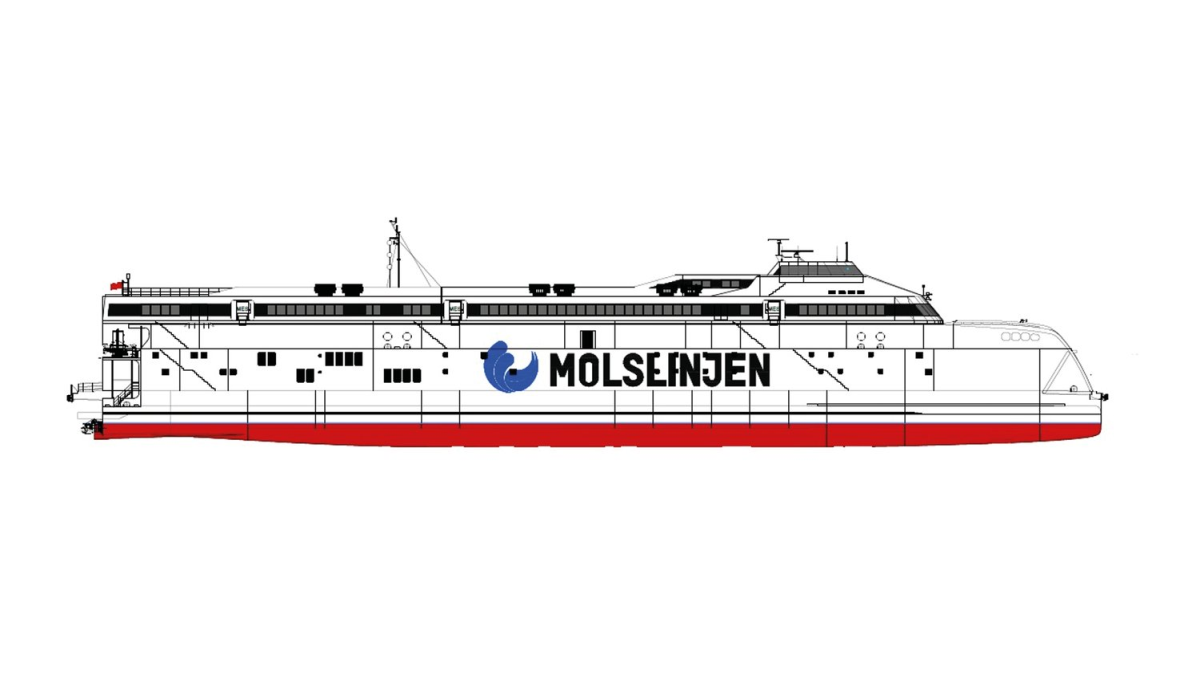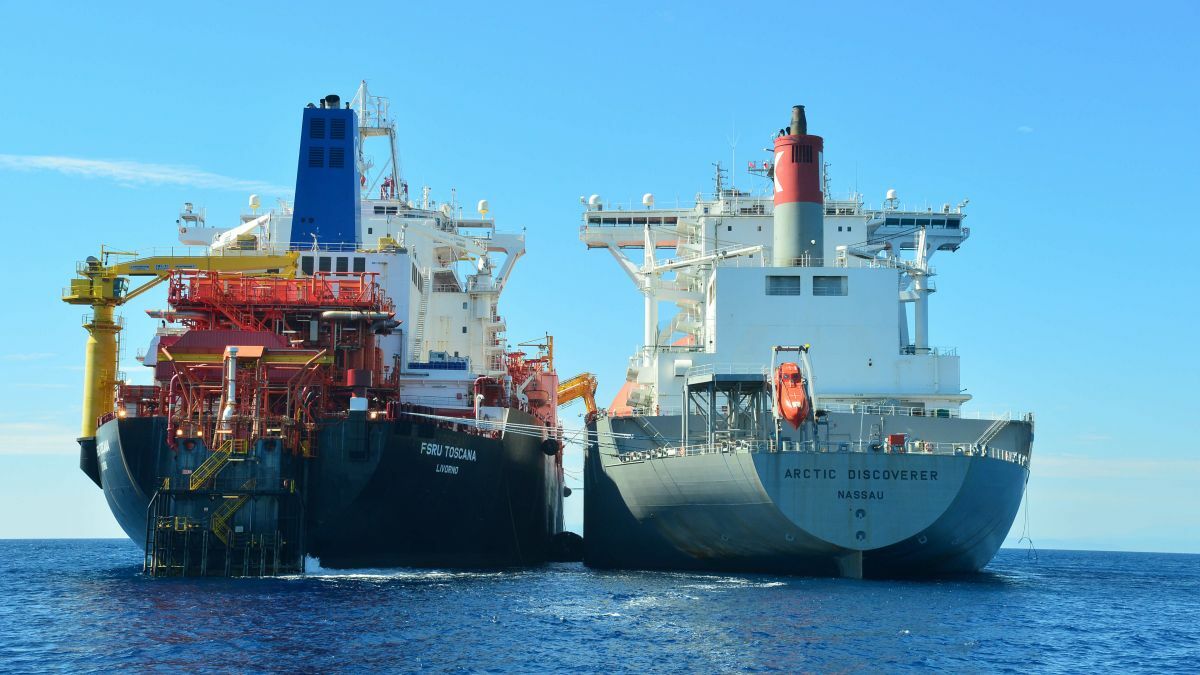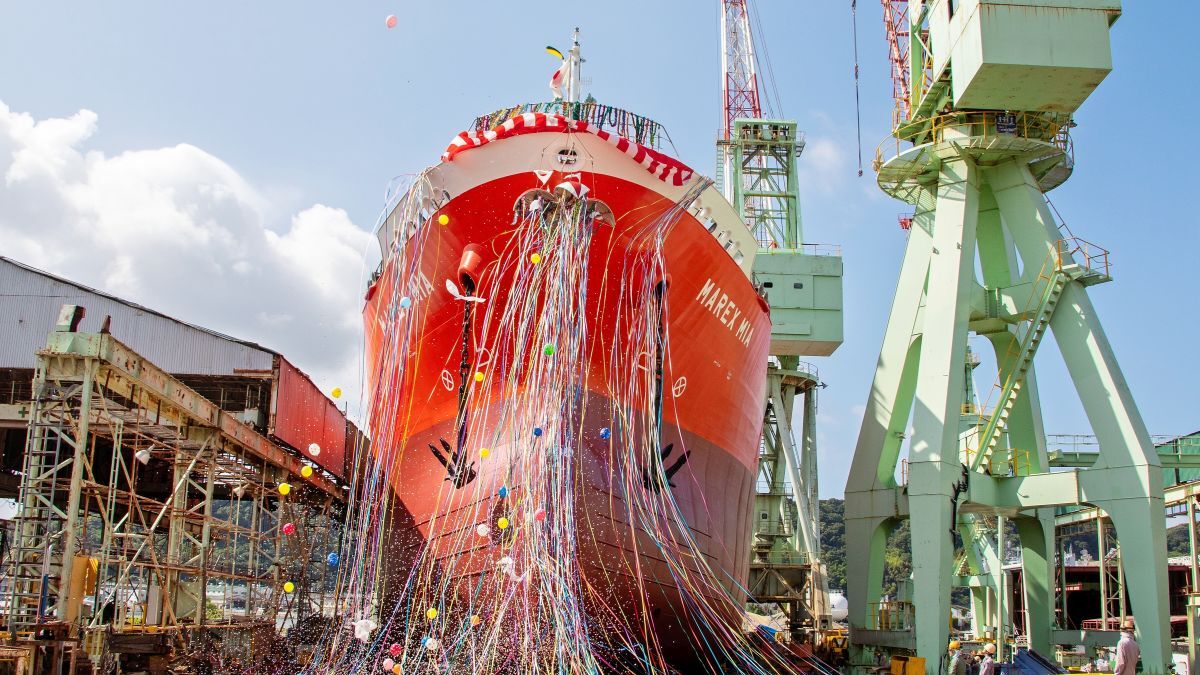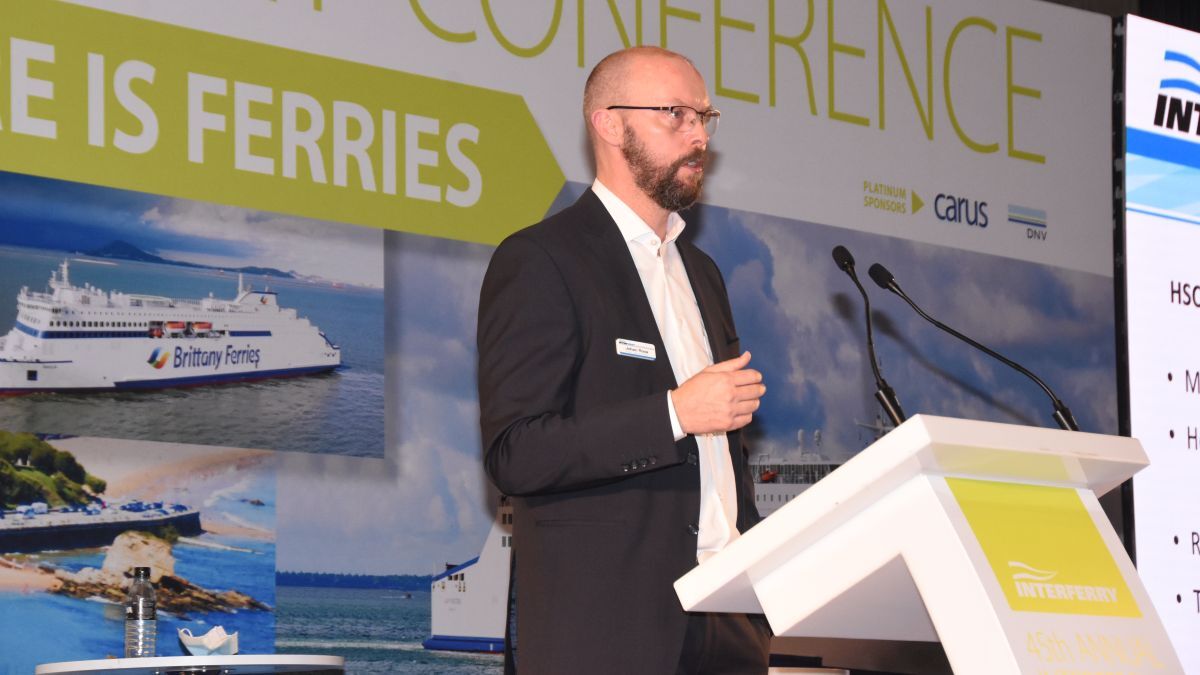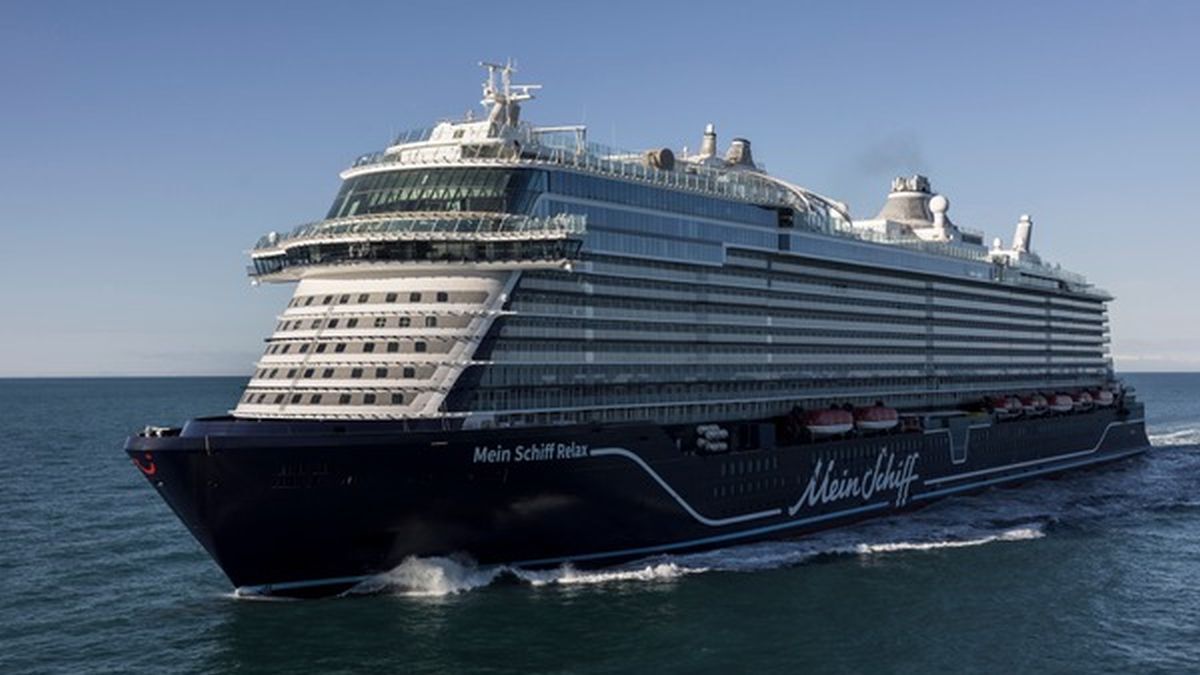Business Sectors
Contents
Rim motors drive thruster development
Rim-driven motor development for tunnel and azimuthing thruster applications has been enthusiastically pursued by designers who highlight the performance and compactness merits of this technology
There is nothing new in the idea of arranging a thruster propeller with its blades connected to a ring and driven by that same ring rather than by a central hub. Reference literature shows that one of the first to patent such a concept was the German inventor Kort in the 1930s as an extension to his famous nozzle.
Kort even proposed configuring an electric motor around the ring driving the propeller: if the motor is placed on the outer ring it can produce a far greater torque due to its increased arm. This would eliminate the need for mechanical gearing and give the propeller an undisturbed inflow.
It took another 70 years for the idea to be translated into commercial reality, however, the breakthrough being enabled by the availability of high density permanent magnet drives and sensorless control technology as well as advances in bearings.
Lower noise levels, reduced weight and space saving advantages over traditional bow and stern thrusters, coupled with higher performance, robustness and environmental friendliness, are claimed for new rim-driven thruster designs from major specialists.
A rim drive is an integrated system combining the electrical, mechanical and hydrodynamic elements. The electric motor is in the form of a thin ring, with its stator fixed in the tunnel and its rotor carrying propeller blades that point inwards and are rotated to create thrust.
An early commercial reference was gained last year by Rolls-Royce with a rim-driven 883kW stern tunnel thruster installation for the offshore support vessel Olympic Octopus. With an effective diameter of 1.6m, the thruster forms part of the dynamic positioning outfit.
Composite materials are extensively used and the bearings are water lubricated, eliminating shaft seals and oil-filled gear housings. The efficient permanent magnet motor design was developed by Rolls-Royce and Smart Motor of Trondheim in Norway.
Water flow through the unit is unobstructed since there is no gearbox in the tunnel and no struts are needed to support a hub, Rolls-Royce explains; and attaching the propeller blades to the rim eliminates uncontrolled flow between blades and tunnel. Curved fairings in the tunnel lead water smoothly to and from the propeller, so increasing the contribution that pressure differences on the hull make to total side thrust.
Together, says Rolls-Royce, these factors foster a higher total efficiency and lower noise and vibration as well as reduced fuel consumption (since more thrust is produced for a given power input).
Structural merits are also cited for the rim drive thruster, which is significantly lighter than conventional tunnel thrusters and gives the ship designer more freedom. Its axial length is much shorter, for example, an advantage in a stern thruster because a wide aft skeg is no longer needed.
Such a thruster can be mounted far aft in a slim skeg, increasing the thruster’s turning moment and thus effectiveness for a given power input. No motor room is necessary as the cabinet for the frequency-controlled electrical supply can be installed where convenient, and there is no requirement to accommodate a bulky electric motor.
Since the rim drive unit is installed from the tunnel mouth the only access needed in the hull is for the small cable connection box. A ship designer thus has the freedom to exploit the space above the tunnel for other purposes.
Installing the thruster as a bow or stern unit requires little shipyard time, Rolls-Royce adds. The tunnel is welded in using normal techniques, and the thruster itself bolted to the tunnel; the thrusters can be exchanged if required without docking the vessel.
Norwegian specialist Brunvoll has developed rim drive thrusters since 2002 in co-operation with Norpropeller AS, which it partly owns. Development was stimulated by increasing market demand for vessels in which both propulsion lines and manoeuvring thrusters incorporate electric motors with variable speed drives.
Brunvoll’s thruster is electrically-driven by a permanent magnet motor in which the windings are in the stator and the rotor has a number of permanent magnets. The rotor bearings are located at the periphery of the rotor and the fixed pitch propeller is directly connected to the rotor (hence the thruster unit has no central shaft).
As the motor is an integral part of the propeller nozzle in a ducted azimuthing thruster and an integral part in a section of the tunnel in a side thruster, space is released on board and greater flexibility allowed in installation arrangements.
Using permanent magnets in the motor also yields more flexibility in selecting motor speed (number of motor poles) and a higher motor efficiency. The bearings, both magnetic and hydrodynamic types, are designed to eliminate the need for lubricating oil and there are no dynamic seals; maintenance costs and oil pollution are thus minimised,
says Brunvoll.
With no central shaft or shaft supporting struts in the system, water inflow to the propeller is undisturbed, enhancing thruster efficiency and reducing propeller-induced noise and vibration. The elimination of a central shaft and support stays, and the fact that there are no dynamic seals, is also beneficial with respect to potential damage from lines and ropes entering the thruster.
No gap between the propeller tips and the duct or tunnel promotes higher propeller efficiency and lower noise levels; in addition, the propeller blade thickness may be reduced, and the radial thickness distribution as well as radial load distribution may be changed to enhance propeller efficiency.
The rim drive concept can be applied to almost all thruster types with a variable speed drive, says Brunvoll: azimuthing main or auxiliary propulsion thrusters; retractable azimuthing thrusters; tunnel thrusters; and combined tunnel and azimuthing thrusters.
Applications can be made directly to vessels specified with diesel-electric power systems and variable speed motors served by frequency converters. Variable speed electric drives are of particular interest, Brunvoll suggests, where the power needed for propulsion is minor compared with the overall power demands of the vessel, as well as for tonnage with a deployment profile involving considerable periods at low load operation.
Brunvoll and Norpropeller collaborated in developing a drive system based on variable speed permanent magnet (PM) generators and PM motors which enables the diesel engine prime mover to be run as if it were mechanically coupled directly to the propeller.
No reduction gear is required since the optimum speed for both engine and propeller can be derived by selecting the appropriate number of poles for the generator and propeller motor. A small frequency converter (much cheaper than normally applied) is used for operating at low power, idling or reversing.
Alternative thruster drive systems demonstrated and tested include operation with a conventional frequency converter; and operation with a PM generator directly coupled to the thruster PM motor, and where the motor speed follows the generator synchronously from zero to full speed.
Tests have also been conducted by Brunvoll on a drive system configuration with a PM generator for the PM propeller motor and a variable speed generator (VAR-G) supplying constant frequency power to a ship’s network. Both starting of the thruster motor using a reduced size frequency converter and synchronisation towards the VAR-G have
been demonstrated.
Various methods of curbing cavitation noise in conventional tunnel thrusters – a development focus in recent years – include air injection systems and insulating arrangements that minimise mechanical contact with a ship’s hull via flexible rubber mountings and insulation chambers.
Dutch designer Van der Velden Marine Systems highlights the cavitation-countering characteristics of its rim-driven EPS thruster, R&D project manager Chris Maat explaining that,“Cavitation noise is mainly generated at tip vortices by the pressure differential between the pressure and suction sides of the propeller blades. In tunnel thrusters and nozzles this is amplified by the clearance between the propeller tip and the tunnel wall.
“Our development team proposed attaching the blades to an outer ring rather than to the central hub. This would eliminate the clearance and block the contact between the pressure and suction sides of the propeller blade, thereby preventing the generation of tip vortices. Free propeller tips in the centre have a far lower speed and are therefore less prone to cavitation.”
In developing the EPS thruster, Van der Velden formed a consortium with the Dutch companies Airborne Development, Combimac and JB Besturingstechniek. The design is divided into four main functional groups: the propeller; ring motor assembly; controls; and unit mounting into the hull.
Using fibre-reinforced plastic material for the propeller blades offers two main advantages over traditional metallic blades: a lower weight, reducing a propeller’s inertia compared with the rotor part of the ring motor; and favourable sound-dampening properties, which help to curb cavitation noise that cannot entirely be avoided.
A relatively high number of blades – no less than seven – further reduces the blade load and thus the risk of cavitation.
The availability of permanent magnet electric motors proved valuable when development of the EPS thruster was started in contrast to earlier attempts to design a rim-driven thruster. The high power density of such machines fosters a compact motor design.
Van der Velden recently introduced an azimuthing retractable version of the EPS thruster to complement its tunnel thruster. FT
Related to this Story
Events
LNG Shipping & Terminals Conference 2025
Vessel Optimisation Webinar Week
Marine Coatings Webinar Week
© 2024 Riviera Maritime Media Ltd.


